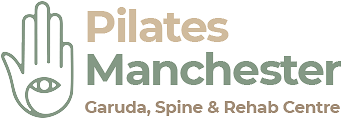What is Osteoporosis?
- It’s a fairly common condition that affects around three million people in the UK.
- More than 300,000 people receive hospital treatment for fragility fractures (fractures that occur from standing height or less) every year as a result of osteoporosis.
- Wrist fractures, Hip fractures and fractures of the vertebrae (bones in the spine) are the most common type of breaks that affect people with osteoporosis. However, they can also occur in other bones, such as in the arm, ribs or pelvis.
- There are usually no warnings you’ve developed osteoporosis and it’s often only diagnosed when a bone is fractured after even minor falls.
James Linsdell, Manchester:
“I have been on 2 different pilates courses in the City Centre using 2 different pieces of equipment: arc barrel and swaii ball. Both courses have been very different, focusing on different techinques and moves with varying parts of the body. The courses have a progressive feel, moving forward to more a higher level through each session.”
How Pilates can benefit Osteoporosis
- Not only can these core-strengthening workouts strengthen bones and help prevent future injury, they may also help melt belly fat, which may further help protect against osteoporosis.
- Last year, a Harvard study found that women with more visceral belly fat had decreased bone density levels.
- The fundamentals of Pilates offer a terrific platform for strengthening bones and preventing fractures if done properly,” says Rebekah Rothstein, a New York City Pilates instructor and a faculty member at the Kane School of Core Integration, where she trains Pilate’s teachers.
- Rothstein has also put together a set of Pilates exercises for osteoporosis called “Pilates for Buff Bones.”
How Yoga can benefit Osteoporosis
- In addition to providing stress reduction and a mild workout, yoga can also be an effective treatment for osteoporosis, either on it’s own or supplemented by other treatments.
- Research has shown that yoga can prevent or slow — and in some cases even reverse — the process of bone loss. Osteoporosis — a disease characterized by weak, thinning bones that can lead to fractures — affects an estimate 200 million women worldwide, and one in three women over 50 experience osteoporosis fractures risk factors for osteoporosis include being female, age, low body weight and smoking.
How Rehabilitation can benefit Osteoporosis
- Osteoporosis is a condition in which bones lose their density and are more prone to fracture. It can affect a variety of people, including those of all different ages, abilities, and medical complexity.
- Compression fractures of the spine are a frequent result of the disease, causing lasting pain, immobility and reduced quality of life.
- The good news is that while some bone loss is inevitable, osteoporosis and further bone loss can be prevented, controlled, slowed and managed. At RIC, we offer a threefold approach to treatment – diagnosis, medication and physical rehabilitation – which may be integrated with your primary physician’s care and other medical specialists’ treatment plans, or may act as an independent, comprehensive treatment.
